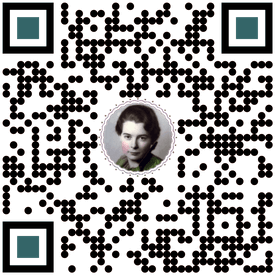White Cake Variations Recipes: 18+ Timeless Desserts From 2 Basic Recipes
There's a special kind of magic tucked away in old family recipe boxes — the kind that turns simple, honest ingredients into cherished memories. These White Cake Variations Recipes, discovered in two separate but equally loved collections from the early 1900s, are a perfect example of that magic.
They reveal the timeless secret of the resourceful home baker: how to take one perfect, never-fail white cake recipe and transform it into more than a dozen different, delightful desserts, each with its own unique personality.
This page is your guide to unlocking that old-fashioned wisdom. We'll explore two foundational recipes — one from a treasured 1920s scrapbook and another from a 1915 Pennsylvania German farmhouse — and show you how to adapt them to create everything from a bright Orange Cake to a rich Dark Fruit Cake. Get ready to fill your kitchen with the wonderful aroma of from-scratch baking and create desserts you'll be proud to share.
Mom's Favorite White Cake Variations Recipe: A Never-Fail White Cake
Mom's Recipe Scrapbooks (c. 1920s)
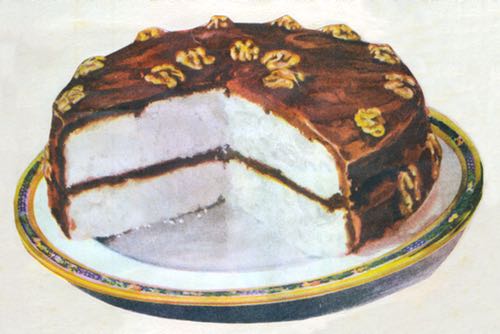 Homemade White Cake with Mocha Frosting and Walnuts
Homemade White Cake with Mocha Frosting and Walnuts(Source: Magazine Clipping, c. 1930s)
This first set of recipes comes from a lovingly compiled scrapbook from the 1920s. The basic white cake is wonderfully tender and versatile, a true kitchen workhorse. The notes beside it promise that it can be cleverly adapted to make a whole series of cakes simply by altering a few ingredients or the baking method. Let's learn its practical secrets.
The Basic White Cake Recipe: Your Starting Point
Ingredients:
1/2 cupful butter
1 cupful sugar
2 cupfuls cake flour
3 level teaspoonfuls baking powder
2 eggs
2/3 cupful milk
1 teaspoonful flavoring
Note: All above measurements are level.
Instructions:
First: Beat or work the butter with a slotted wooden spoon until it has a whitish appearance around the edges. Gradually add the sugar to the butter, beating the mixture, meanwhile.
Second: Sift the flour, measure, add baking powder and sift three times.
Third: Separate eggs. Beat yolks until light.
Fourth: Beat egg whites until very light and fluffy.
To the creamed butter and sugar add eggs yolks, then alternately the 2/3 cupful of milk and the flour with the baking powder. Beat thoroughly until smooth. Add flavoring. Then carefully fold in the egg whites.
Bake in 2 round layer greased pans (8 x 1-1/4 inches) or in a loaf pan (7 x 7 x 2 inches) in moderate oven (350°F to 375°F).
Spread Mocha Frosting (see below) between layers and top and sides of cake. Decorate with walnut meats.
12 Delicious White Cake Variations
Orange Cake
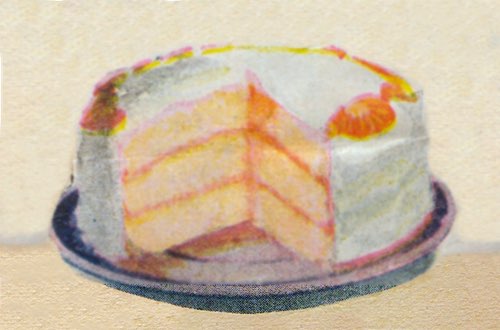 Simple Orange Dessert Cake with White Mountain Cream
Simple Orange Dessert Cake with White Mountain Cream(Source: Magazine Clipping, c. 1930s)
Use the basic white cake. Bake in 2 layers or double the recipe and make 3 large layers and add the orange filling below.
Orange Filling:
1/2 cupful sugar
3 tablespoonfuls cake flour
Grated rind of 1 orange
1 teaspoonful butter
2 tablespoonfuls water
1/4 cupful orange juice
1 tablespoonful lemon juice
(Double ingredients for 3 layers)
Mix in order given. Cook in double-boiler until thick enough to spread. Spread filling between layers.
Cover top of cake with White Mountain Cream Frosting (see recipe below) with orange flavoring added, and 1/4 teaspoonful salt. Spread on top of cake and decorate with thin half slices of orange.
Silver Cake
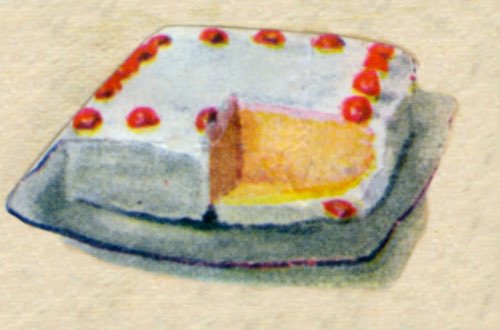 Simple Silver Cake with Butter Cream Frosting
Simple Silver Cake with Butter Cream Frosting(Source: Magazine Clipping, c. 1930s)
Use the basic white cake. Fold in stiffly beaten whites of 3 eggs instead of 2 whole eggs. Bake in small loaf pan. Cover with Butter Cream Frosting (see below) and decorate with candied cherries cut in halves.
Variety Cake
Bake the basic white cake recipe in 2 layers. Spread jelly, White Mountain Cream Frosting (see below) or custard filling between layers. Cover with sweetened whipped cream.
Fruit Layer Cake
Bake the basic white cake recipe in 2 layers. Use 1/2 cupful nuts, 1/2 cupful raisins or dates, and 1/2 cupful figs, all put through a food chopper and mixed with boiled icing as filling. Ice with plain icing.
Marble Cake
Divide basic white cake mixture into 2 parts. Add 4 tablespoonfuls cocoa powder to one part. Drop by spoonfuls into pan — alternating light and dark.
Chocolate Cake
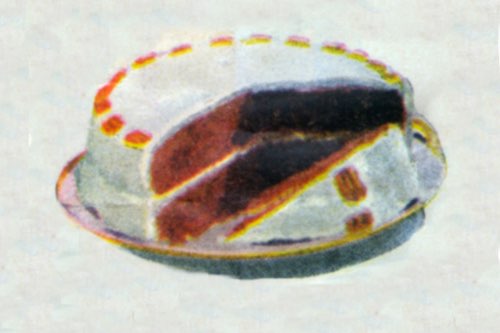 Simple Chocolate Layer Cake with Halved Pecans
Simple Chocolate Layer Cake with Halved Pecans(Source: Magazine Clipping, c. 1930s)
Start with the basic white cake ingredients. Take out 4 tablespoonfuls flour and add 6 tablespoonfuls cocoa. Bake in 2 layers or loaf. Cover with Butter Cream Frosting (see below). Decorate with halves of pecan meats.
Spice Loaf Cake
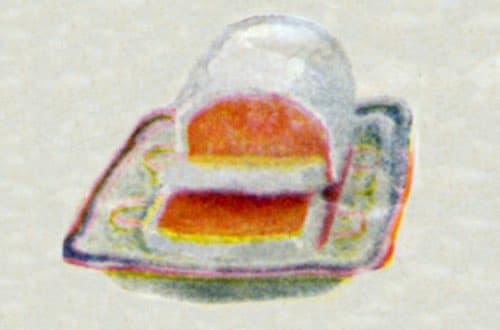 Simple Spice Loaf Cake with Sea Foam Icing
Simple Spice Loaf Cake with Sea Foam Icing(Source: Magazine Clipping, c. 1930s)
Basic white cake recipe. Add the following:
1/2 teaspoonful cloves
1/2 teaspoonful nutmeg
1/4 teaspoonful allspice
1 teaspoonful cinnamon
Bake in long loaf and cover with Sea Foam Icing (see below).
Snowball Cake
Bake Silver Cake (variation above) in layers. Make a boiled icing. Mix 2/3 cupful of coconut with 1/3 cupful frosting. Put between layers. Cover cake with white icing of choice. Sprinkle generously with coconut.
Dark Fruit Cake
To the basic white cake ingredients add the following:
1/4 teaspoonful cloves
1/4 teaspoonful allspice
1 teaspoonful cinnamon
1/2 teaspoonful nutmeg
1/4 cupful chopped walnuts
1/4 cupful raisins
1/4 cupful currants
Few strips of citron
Bake in loaf — slow oven (325°F).
White Fruit Cake
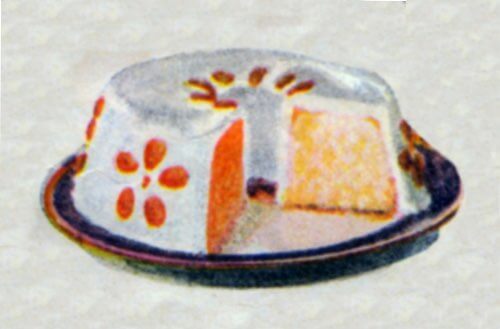 Simple White Fruit Cake with Almond Flowers
Simple White Fruit Cake with Almond Flowers(Source: Magazine Clipping, c. 1930s)
Make Silver Cake (variation above), adding 3 tablespoonfuls coconut, 1/3 cupful chopped nuts, and 1/3 cupful chopped citron.
Bake in stem tin. Cover with White Mountain Cream Frosting (see below) flavored with almond or vanilla. Decorate with almond flowers.
Diamond Gold Cake
Basic white cake recipe — using 3 egg yolks instead of 2 whole eggs. Bake in stem pan. Cover with White Mountain Cream Frosting (see below) flavored with almond or vanilla. Decorate with candied fruits or nuts.
4 Classic Frostings for White Cake Variations Recipes
Mom's Recipe Scrapbooks (c. 1920s)
White Mountain Cream Frosting
This is a classic cooked frosting, also known as 7-minute frosting. It's light, fluffy, and holds its shape beautifully, making it perfect for creating elegant swirls and peaks.
1 cupful sugar
6 tablespoonfuls water
Boil until it spins a thread. Pour hot syrup on a stiffly beaten egg white. Beat until of cake spreading consistency. This creamy frosting goes well with the white cake variations recipes.
Butter Cream Frosting
A simple, rich, and creamy North American-style buttercream. This frosting is a go-to for its ease of preparation and its wonderful buttery flavor that complements nearly any cake.
4 tablespoonfuls butter
6 tablespoonfuls milk
1 teaspoonful vanilla
Powdered sugar, enough to make a smooth frosting that will spread evenly.
Sea Foam Icing
This lovely frosting is similar to White Mountain Cream, but uses brown sugar for a deeper, more caramel-like flavor. It's the perfect companion for the Spice Loaf Cake but is delicious on chocolate or vanilla cakes as well.
1 cupful brown sugar
6 tablespoonfuls cold water
Cook until it spins a thread. Pour hot syrup on a stiffly beaten egg white. Add 1/2 teaspoonful cinnamon. Beat until cool and creamy to spread.
Mocha Frosting
A coffee and chocolate lover's dream! This easy-to-make frosting combines rich butter, cocoa, and strong coffee for a flavor that is both bold and delicious. It's the classic pairing for the basic white cake.
6 tablespoonfuls melted butter
6 tablespoonfuls cold cooked coffee
4 tablespoonfuls cocoa
Confectioners' sugar, enough to stiffen to easy spreading consistency
Spread frosting between layers and top and sides of cake. Decorate with walnut meats.
Simple White Cake Variations Recipes From the Farmhouse Kitchen
Mary at The Farm and Book of Recipes (1915)
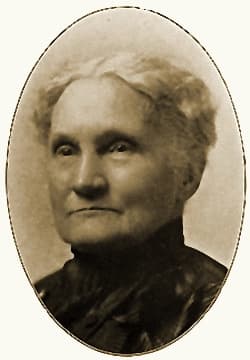 Aunt Sarah Landis 1915
Aunt Sarah Landis 1915Now, let's step back in time and enter the cosy farmhouse kitchen of Aunt Sarah Landis, a traditional Pennsylvania German housewife from 1915. This White Cake Recipe, taken from "Mary at The Farm and Book of Recipes," is presented as an entertaining story. It's a priceless lesson in thrift, skill, and the art of making something truly special from simple, honest ingredients.
Listen in as she shares her prized cake baking secrets and cooking experience with her young niece Mary:
"Aunt Sarah," questioned Mary one day, "will you tell me how it is possible to evolve a number of cakes from one recipe?"
"Certainly I will, my dear," said her Aunt. "For instance, take the following white cake variations recipe from which I have for years baked layer cake.
You may have other cake recipes given you, equally as good, but I feel positive none are better."
Continue reading below...
Aunt Sarah's Basic White Cake Variations Recipe
The cakes made from this versatile recipe is not rich enough to be unwholesome, but a good, reliable, inexpensive, easily made WHITE CAKE, with which I have NEVER had a failure
The basic recipe, as you know, consists of 1-1/4 cups of granulated sugar, 1/2 cup of a mixture of butter and sweet lard (or use all butter), 1/2 cup sweet milk, 2 cups flour, and 2 teaspoonfuls baking powder. And 3 eggs.
The simplest manner of baking this cake is in two square cake pans in a moderate oven (350°F). When baked, take from pans and ice each cake with a boiled chocolate icing and put together as a layer cake.
Or, ice each cake with a plain, boiled white icing and, when this is cold, you may spread over top of each cake unsweetened chocolate, which has been melted over steam after being grated.
When cake is to be served, cut in diamonds or squares. Or add to the batter 1 cup of chopped hickory nut meats, bake in 2 layers, and cut in squares.
Or, the following white cakes can be made simply by altering the basic white cake variations recipe.
Chocolate Cakes
For a CHOCOLATE LOAF CAKE, add two generous tablespoonfuls of unsweetened melted chocolate to the batter just before baking.
If you wish a CHOCOLATE LAYER CAKE, use the same batter as for the chocolate loaf cake, bake in two layer pans and put together with white boiled icing.
Small Fruitcake
Scant Teaspoonful
A measure slightly less than a level teaspoon.
Or, add to this same batter one scant teaspoonful of cinnamon, ginger, 1/2 teaspoonful of grated nutmeg and cloves, a cup of raisins or dried currants, and you have a SMALL FRUITCAKE.
Lemon Cake
Or, add a small quantity of thinly shaved citron to the original recipe, flavor with lemon, bake in a loaf and spread a white icing flavored with lemon extract over top of cake, and you have a LEMON CAKE from scratch.
Marble Cake
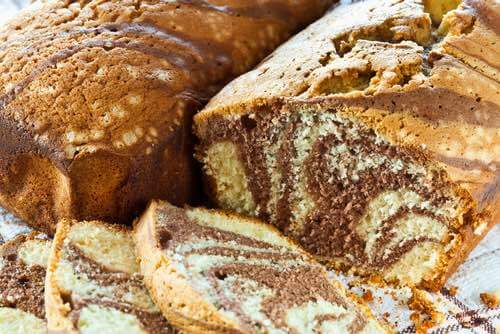 Make Marble Cake and Others Using the White Cake Variations Recipes
Make Marble Cake and Others Using the White Cake Variations Recipes(Source: ©Xalanx/Depositphotos.com)
Or, add chocolate and spices to one-half the batter (about one-half as much chocolate and spices as were used in batter for fruit cake) and place spoonfuls of the light and dark batter alternately in a cake pan, until all batter has been used, and you will have a cheap, old fashioned MARBLE CAKE.
Lady Baltimore Cake
Or, bake the basic white cake recipe in two-layer pans, placing between layers either tart jelly, a creamy cornstarch filling, grated coconut, apple cream filling, or you might even use half the recipe given for the delicious icing or filling for LADY BALTIMORE CAKE.
Small White Cakes
For the last of the white cake variations recipes, bake SMALL CAKES from this same versatile recipe.
Mary, you should have small pans for baking these delicious little cakes, similar to those I possess, which I ordered made at the tinsmith's. I took for a pattern one Frau Schmidt loaned me.
They are the exact size of (round) one-quarter pound boxes of Royal® baking Powder. Cut the box in three pieces of equal height, and your cakes will be equally as large in diameter as the baking powder box, but only one-third as high.
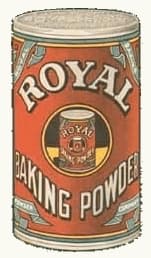
I place a generous tablespoonful of the batter in each of the twenty-four small pans, and cakes rise to the top of pans. Usually, I have batter remaining after these are filled. Ice all the cake except the top with a white boiled icing or chocolate icing.
These small cakes keep exceedingly well, and are always liked by young folks and are particularly nice for children's parties.
Grandma's Cake Variations Success Tips
These old fashioned recipes use terms and techniques that might be unfamiliar to modern bakers. Here is a helpful guide to ensure your cakes turn out perfectly every time.
- "Spins a Thread": This is a term used for making cooked frostings and candy. After boiling the sugar and water for several minutes, dip a spoon into the syrup and pull it out. If a thin, thread-like strand forms and hangs from the spoon, it has reached the "thread stage" (about 230-235°F or 110-112°C) and is ready.
- Folding in Egg Whites: This is a gentle mixing technique. Use a large spatula to cut down through the middle of the batter, scrape along the bottom of the bowl, and bring the batter up and over the top. Give the bowl a quarter turn and repeat. This incorporates the airy egg whites without deflating them, which is the secret to a light, fluffy cake.
- Room Temperature Ingredients: For the best results, always use butter, eggs, and milk that are at room temperature. Room temperature butter creams more easily with sugar, and room temperature eggs and milk incorporate more smoothly into the batter, creating a more uniform and stable emulsion.
- The Importance of Sifting: While modern flour is finer than the flour that Aunt Sarah Landis used, sifting still helps aerate it and combine it evenly with leavening agents like baking powder.
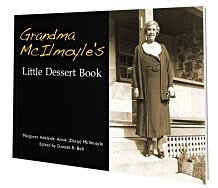
Sign Up now for GRANDMA'S DESSERT CLUB and download your FREE PDF COPY of Grandma McIlmoyle's Little Dessert Book. Also receive my regular Bulletin featuring classic recipes and nostalgia.




